Exploring Chefchaouen, the "Blue Pearl" of Morocco - A Mysterious & Beautiful Mountain Town
In the last post I discussed my first day in Morocco, taking the boat from Tarifa, Spain to Tangier. The next day, I was compelled to leave Tangier and head 2 hours south into the mountains, where I would find the famous “Blue Pearl” town of Chefchaouen. It was not difficult to arrange transportation, as buses in this direction operated fairly regularly.
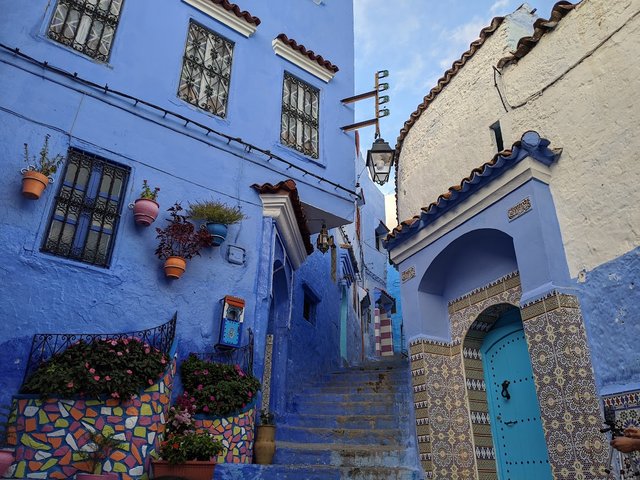
The first thing you notice when you step off the bus in this town is the cooler weather, beautiful and rugged mountains, freshness of the air, and of course the blue painted buildings. There are no motor vehicles running through the old part of the city, mostly due to the narrow and winding nature of the alleys. As a result, the air is much cleaner than I noticed in Tangier, which was noticeably more dusty.
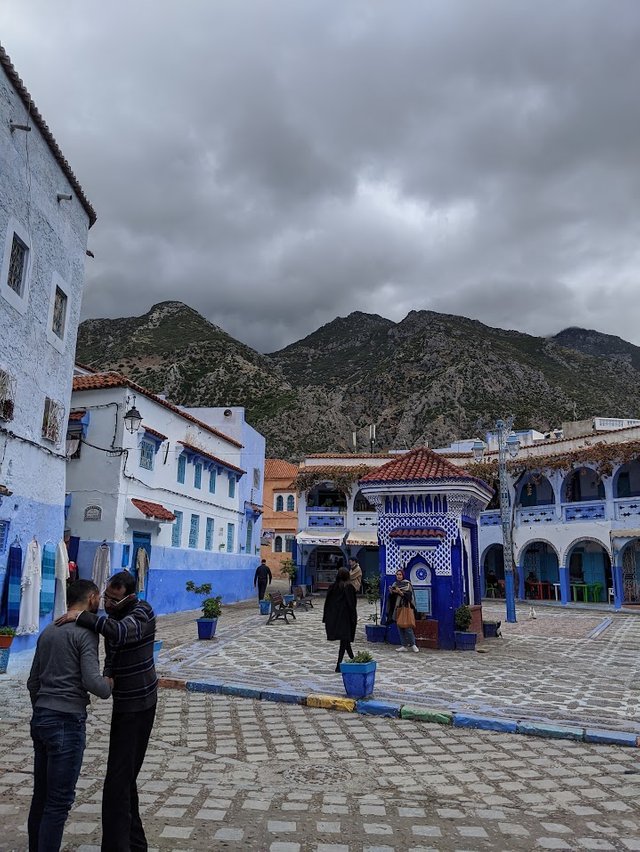
The town is beautifully decorated, with blue paint on most of the walls and stairs, ornate tiles around the doors, and colorful potted plants hanging in many places. When I visited, I did not notice many influencers, but I would imagine this would be a popular destination for aspiring photographers.
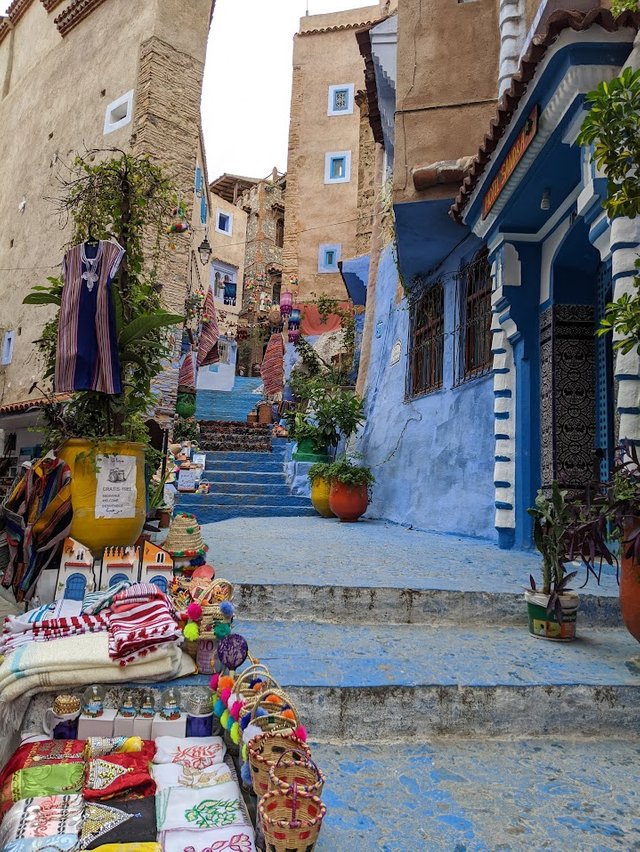
Depending on who you ask, there are a number of reasons given for why the town is painted blue. One reason is that the blue color is thought to reflect the sunlight and keep the buildings cool on sunny days, which is helpful considering most of the buildings do not have air conditioning. Another reason I was told is that it scared away the mosquitos. I do not know if this works, but I can say that I did not have any problems with bugs while I stayed here. Others said that painting their homes this way was a simple way to promote cohesion in the community and to honor the traditions of their ancestors.
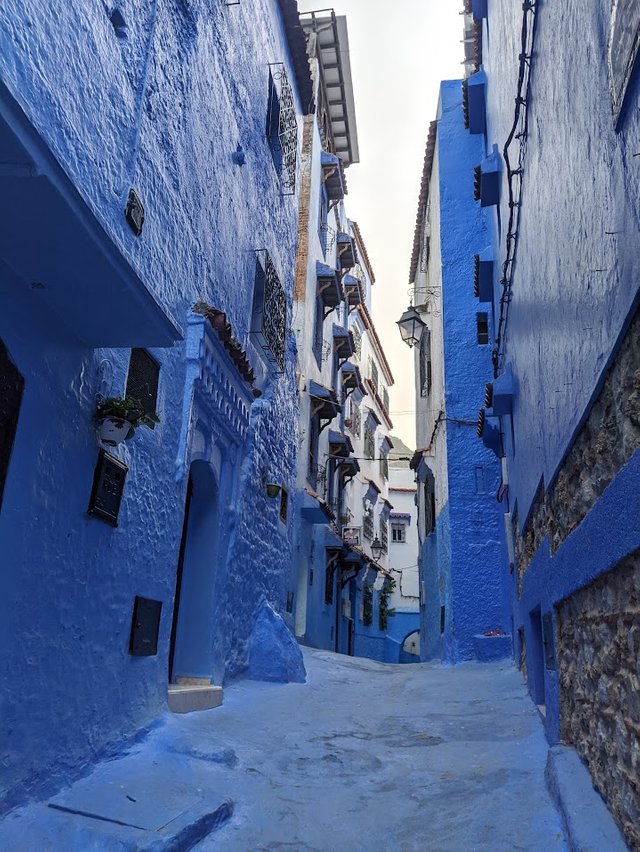
Despite being in the mountains, the design of the buildings and colors give off a Mediterranean vibe, and I am told that the town has always had close cultural ties to the sea. This makes sense to me, as the coastal cities of Tetouan and Tangier are located just on the other side of the Rif Mountains. That being said, the layout and architecture of the buildings also reminds me a bit of the mountain town of Granada in Southern Spain. When I mentioned this to the man running the guesthouse he said that many of the towns early inhabitants were people expelled from Spain during the The Reconquista. This was a time when Catholic Spain fought and defeated the Muslim Moorish Kingdom for control of Southern Spain. At the conclusion of this conflict, many Muslim and Jewish refugees fled to this area. When discussing this with another traveler, he went on to tell me that in the Jewish tradition blue represents the sky or heaven, and that the presence of Jewish refugees long ago could be another explanation for the choice of blue paint.
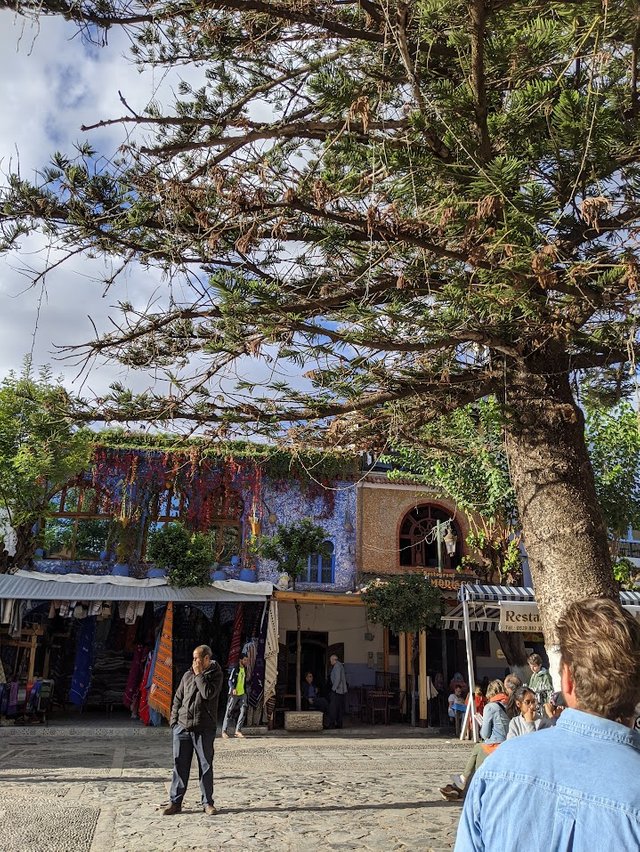
The real origins of the Blue Pearl may be mysteries now lost to history, but one thing is for certain, its a beautiful place to go for a walk.

I hope you enjoyed my post about Chefchaouen, if you would like to read about my experience in Tangier, you can read that post here.
All photos were taken by me. Stay tuned for future posts about my adventures traveling through Morocco.